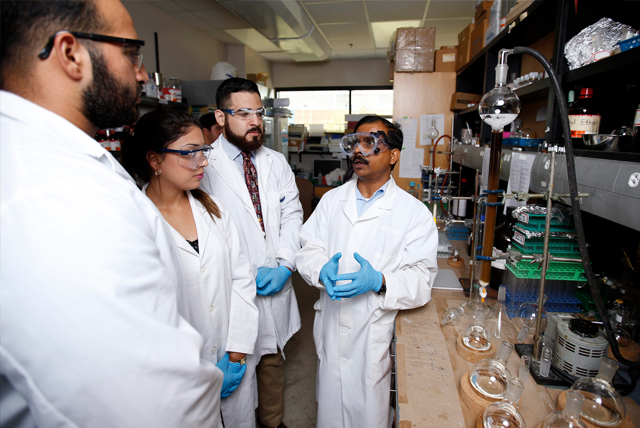Document Type
Article
Publication Date
12-2020
Abstract
Size tunable nanoparticles (NPs) have played an important role in areas of optoelectronics, drug delivery, magnetism and many others. Moreover, designing size-tunable NPs without exposing them to high temperature and long time thermal treatment is highly desirable to make agglomerate- and defect-free NPs. In this work, we have designed Gd2Hf2O7:Eu3+ (GHOE) NPs using the molten-salt synthesis (MSS) method with the precursors made from varying precipitant concentrations (correspondingly the pH of the precipitating solution). The obtained NPs have a decreasing size as the pH of the precipitating solution rises and a defect fluorite structure with a large fraction of Eu3+ ions localized at GdO8 distorted scalenohedra, a small fraction residing at Hf4+ site, and the presence of oxygen vacacnies in the vicinity of E u ′ H f . Maximum photoluminescence and radioluminescence outputs and internal quantum yield have been observed from the GHOE NPs made from 5.0% NH4OH as precipitant due to optimum balance of surface defects and particle clustering. Judd-Ofelt analysis has confirmed that these GHOE NPs have lowest non-radiative transition probability, brightest red emission, largest branching ratio, and highest radiative transition rate. With increasing pH of the precipitating solution, the group symmetry of Eu3+ ions in the GHOE host decreases systematically from D4 → C4v → C3v and then saturates, consistent with the pH dependent asymmetry ratio value. Also, the extent of polarizability enhances and the Eu–O bond becomes more covalent as confirmed by the monotonic increase of Ω2/Ω4 ratio. Our work on these optical materials will assist the scientific community to make size-tunable nanoparticles at low synthesis temperature for efficient luminescent devices.
Recommended Citation
Gupta, Santosh K., et al. "pH induced size tuning of Gd2Hf2O7: Eu3+ nanoparticles and its effect on their UV and X-ray excited luminescence." Journal of Luminescence 228 (2020): 117605. https://doi.org/10.1016/j.jlumin.2020.117605
Publication Title
Journal of Luminescence
DOI
10.1016/j.jlumin.2020.117605



Comments
© 2020 Elsevier B.V. All rights reserved.
https://par.nsf.gov/servlets/purl/10167094.